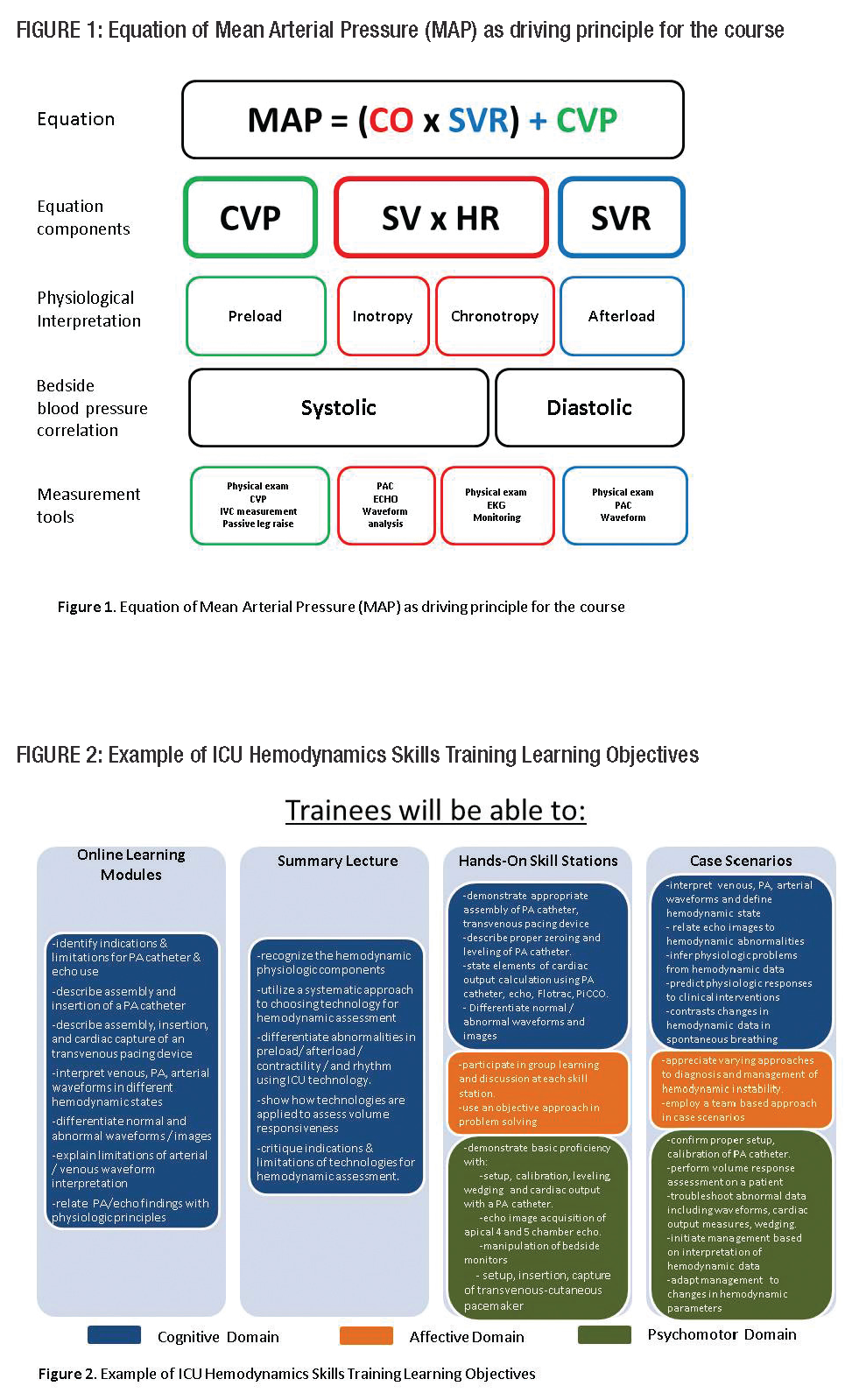Cleveland Clinic
Cleveland, OH
Program Director: Eduardo Mireles-Cabodevila, MD, and Rendell Ashton, MD
Type of Program: Pulmonary and Critical Care Medicine
Abstract Authors: Neal Chaisson, MD; Aanchal Kapoor, MD; Rendell Ashton, MD; Abhijit Duggal, MD; Ajit Moghekar, MD; Deborah Rathz, MD; Robert Chatburn, MD; Sudhir Krishnan, MD; Carlos Alviar-Restrepo, MD; and Eduardo Mireles-Cabodevila, MD
BACKGROUND
A recent study showed that U.S. trainees have low confidence in managing cardiac critical illness and performing cardiac procedures specific to the ICU. Training programs rely primarily on reading and didactic lectures to teach these skills. We created a simulation-based curriculum for hemodynamic assessment. Our curriculum moves beyond the traditional emphasis on cognitive learning to include psychomotor and affective areas of adult learning theory. We describe the methods for other centers to develop such a course.
METHODS
The course was developed by a multidisciplinary group formed by physicians (critical care, emergency medicine, pulmonary, and cardiology), nurses, educators and fellows. We used literature review, Critical Care ACGME milestones, and our practice needs to define the objectives, curriculum, skill stations, simulations, and evaluations. The course is centered on a basic equation to highlight the physiology, provide structure to patient assessment, apply technology, and define management (fig 1). The objectives were developed to cover the cognitive, psychomotor, and affective domains, and followed the structure for Bloom’s taxonomy (fig. 2).
RESULTS
The curriculum includes a 1) didactic pre-course, 2) simulation day, and 3) evaluation. Didactic pre-course requires self-study online modules covering hemodynamic physiology, monitoring, and assessment and including didactics and online resources/simulators. (Given 4 weeks prior to the simulation.) Simulation day is a full-day event consisting of a summary lecture, hands-on skills stations, and case-based simulations. The summary lecture presents the goals and objectives and highlights key principles of hemodynamic assessment. The skills stations focus on hemodynamic monitoring technology and provide facilitated hands-on training. Case-based simulations focus on recognition, assessment, and management of hemodynamics. Debriefing occurs after each simulation to consolidate knowledge and skills.
EVALUATIONS
Cognitive assessments use randomized questionnaires on hemodynamic assessment and management. Assessments are given prior to the pre-course, after the simulation, and after a two-week period. Psychomotor assessments are performed with checklists and self-assessment at the last simulation of the day and two-weeks later using a modified scenario. Affective assessments are done with a questionnaire on attitudes and confidence in management of hemodynamics.
SUSTAINABILITY
The course can be adapted for institutions that do not have access to high-fidelity simulation capabilities. The course is embedded in the yearly schedule with protected time for fellows and teaching staff.
CONCLUSIONS
We present the structure to develop a course to train critical care fellows on hemodynamic physiology, assessment, and management. We use adult learning theory to cover all domains of learning.




